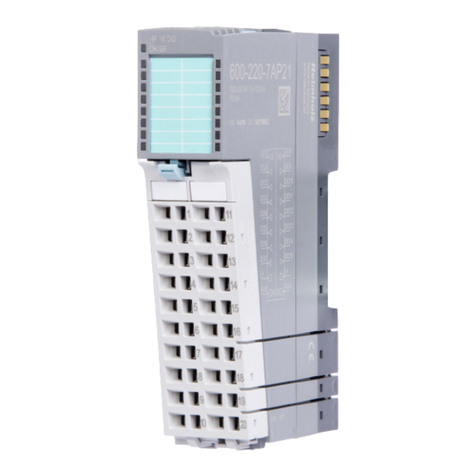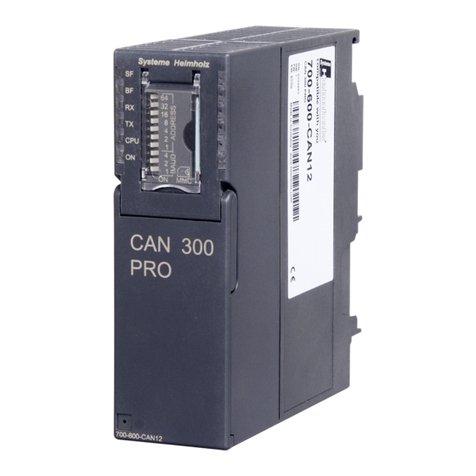
DEA 300 8
1.2 Restriction of access
The modules are open equipment and must only be installed in
electrical equipment rooms, cabinets, or housings. Access to the
electrical equipment rooms, barriers, or housings must only be
possible using a tool or key and only permitted to personnel having
received instruction or authorization. See also Chapter 2.
1.3 Information for the user
This manual is addressed to anyone wishing to configure, use, or
install the DEA 300 modules.
It is intended to show the user how to operate the DEA 300 and
explain the signaling functions. It provides the installing technician
with all the necessary data.
The DEA 300 module is exclusively for use with an S7-300
programmable controller from Siemens or with a PAS 153 PROFIBUS
Slave Interface from Helmholz.
DEA 300 modules are only used as part of a complete system. For
that reason, the configuring engineer, user, and installing technician
must observe the standards, safety, and accident prevention rules
applicable in the particular application. The operator of the
automation system is responsible for observing these rules.
1.4 Use as intended
The DEA 300 modules must only be used as a communication and
signaling system as described in the manual.
1.5 Avoiding use not as intended!
Safety-related functions must not be controlled using the DEA 300
modules alone. Make sure in the software that uncontrolled restarts
cannot occur. The modules must only be operated in slots connected
to a 5 V data bus.
Only authorized persons
must have access to the
modules!
During configuration it
is impe
rative to observe
the safety and accident
prevention rules
applicable in the
particular application.
Uncontrolled restarts
must be prevented in the
software.































